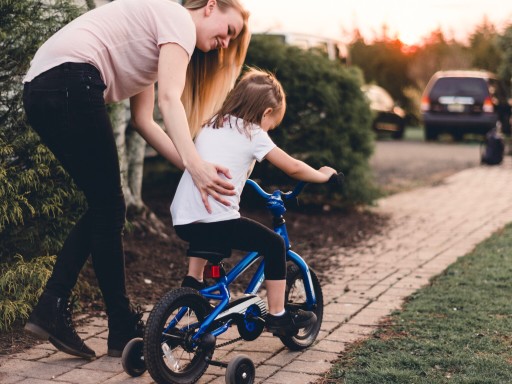How to Teach a Kid How to Ride a Bike
It’s not rocket science, but at the end of the day, teaching that kind of coordination is easier said than done. After decades of muscle memory, most of us don’t even think about how we ride a bike, so teaching it can be a little tough.
Every kid is different, but this is a good outline to at least get you started with teaching your child how to ride a bike.
Step 1: Decide What Type of Bike You Want to Start With

Before you go out and buy a bike, remember that you have three different options:
- A conventional bike without training wheels
- A balance bike
- A conventional bike with training wheels
Each type has its own advantages and schools of thought, but generally speaking, what you go with will depend on how hands-on you want to be with teaching. So we all know what a conventional bike without training wheels is all about but what else is out there if your kiddo isn’t quite ready for this?
What Are Balance Bikes?
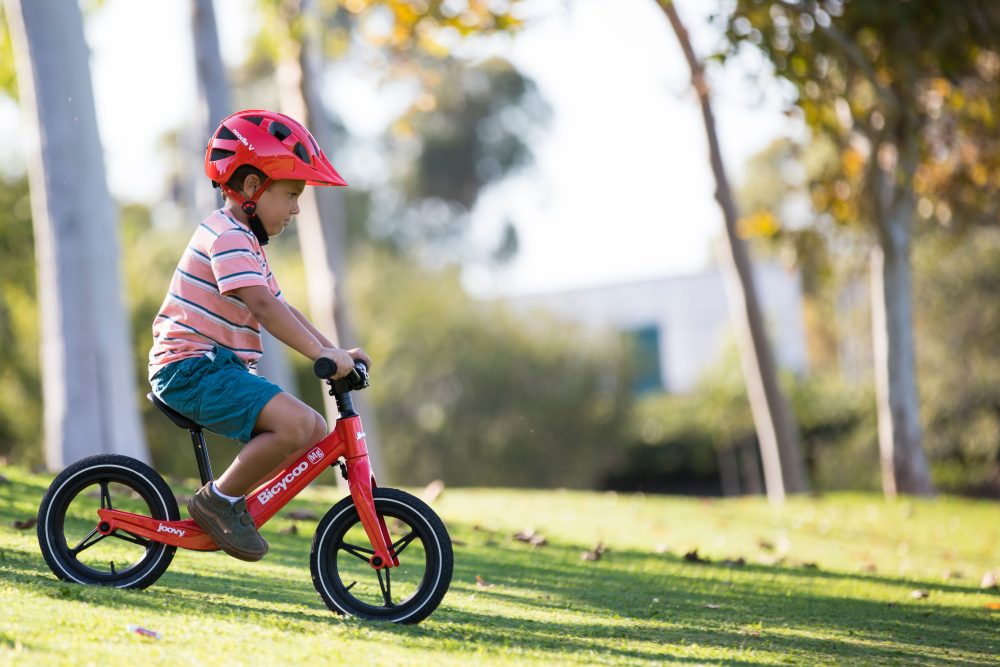
Many parents opt for starting their kids on balance bikes before buying them a bike with pedals. Balance bikes are bikes without pedals designed to teach kids how to do one thing — balance.
To avoid distraction and complicating the initial muscle memory required for balance, most balance bikes are devoid of features like brakes or pedals.
As the child gets older and comfortable with coasting with their feet up, some parents opt to switch them to a balance bike with a brake, or just transition them right to a standard bike without training wheels.
When you start your child on a balance bike, you usually skip the training wheels stage entirely.
Shop Bicycoo MG
Do Kids Need Training Wheels?
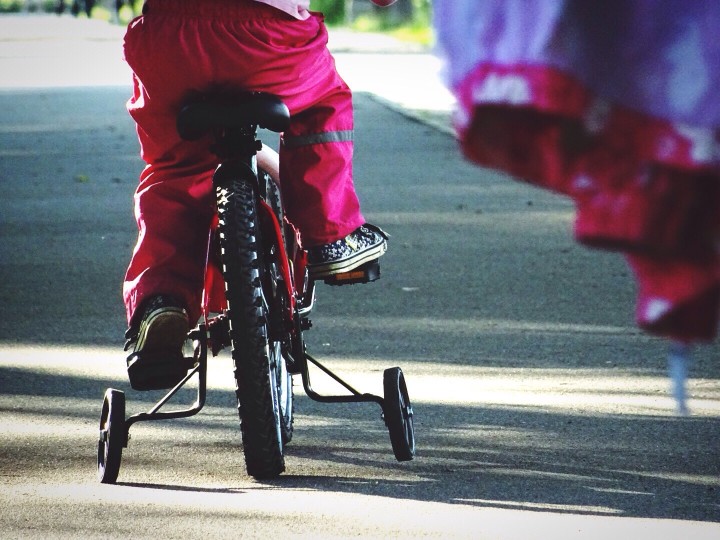
Though most of us grew up on training wheels, the reality is that most kids don’t actually need to start out on a tricycle. For some kids, finding balance is much more difficult than the multitasking required for simultaneous pedaling, steering, and balancing on a bike.
You can skip training wheels altogether and start your child off with a balance bike, or you can use them if that’s your comfort zone. One way or another, your child will get the hang of it eventually. But here are some helpful tips to help build confidence and thus success!
Step 1: Get Some Protective Gear
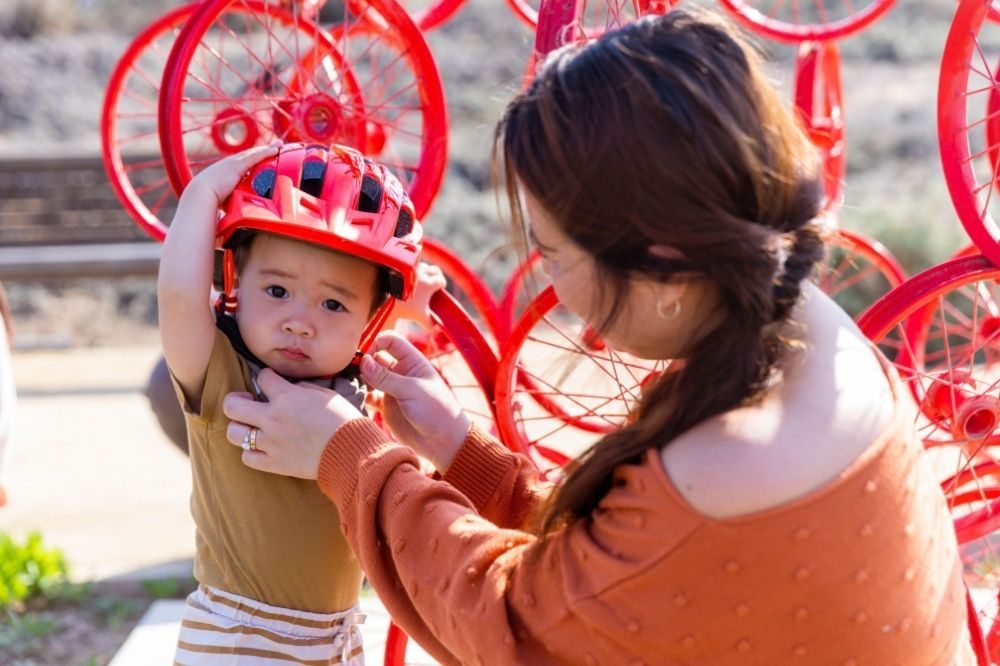
There will be falls, and that’s okay. Make sure you’re prepared and prepare your child too. Get a helmet that fits snugly and covers your child’s head sufficiently, and if you’re really nervous about kid versus pavement, grab some knee and elbow pads too.
Shop Noodle and Noodle V
Step 2: Pick a Spot to Practice
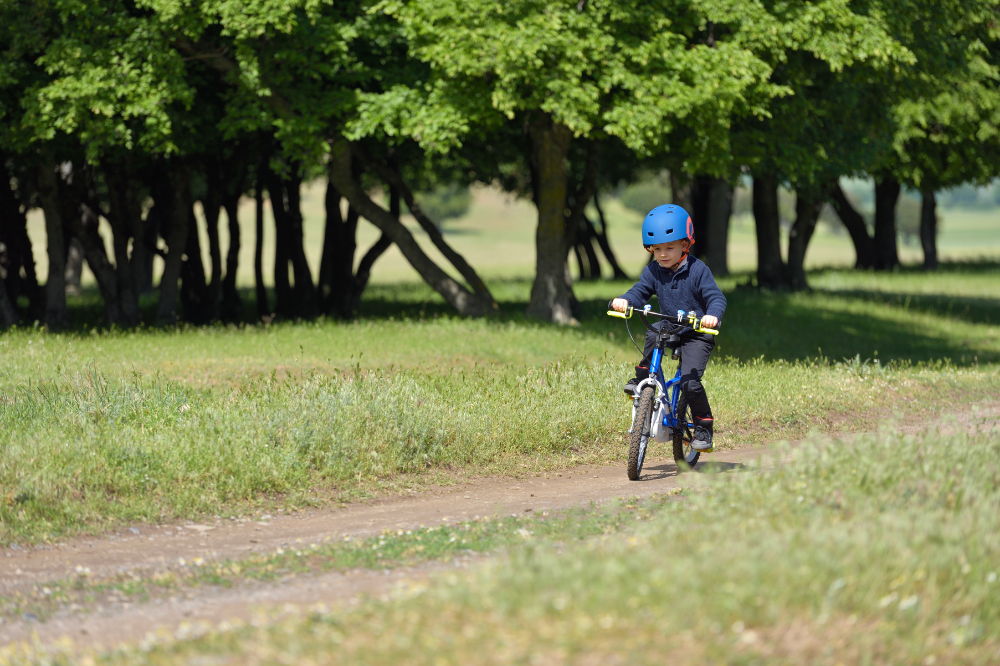
Choose a spot for your child to learn that’s as roomy as possible, like a quiet cul de sac or a vacant parking lot. You’re looking for a paved area that’s smooth, flat, and hill-free as they find their speed and balance control.
Step 3: Establish Some Clear Ground Rules
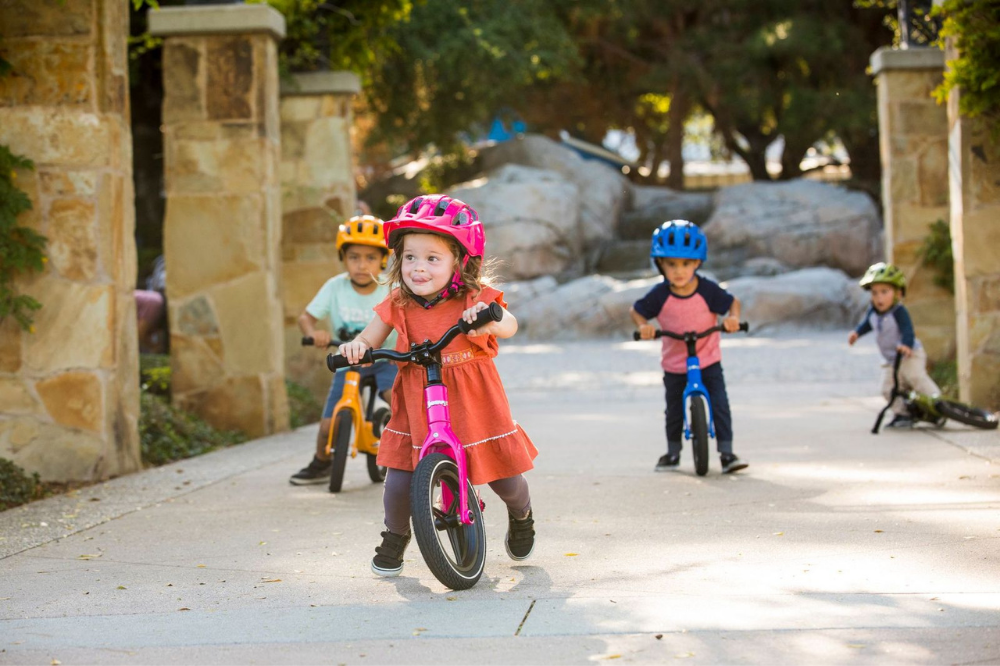
Before you put your child on a bike, make it really clear what kinds of rules there are for cruising around on two (or four) wheels. Talk about what you want them to do if a car comes, the importance of following instructions, and what to do if they fall off their bike.
Step 4: Start With Balance
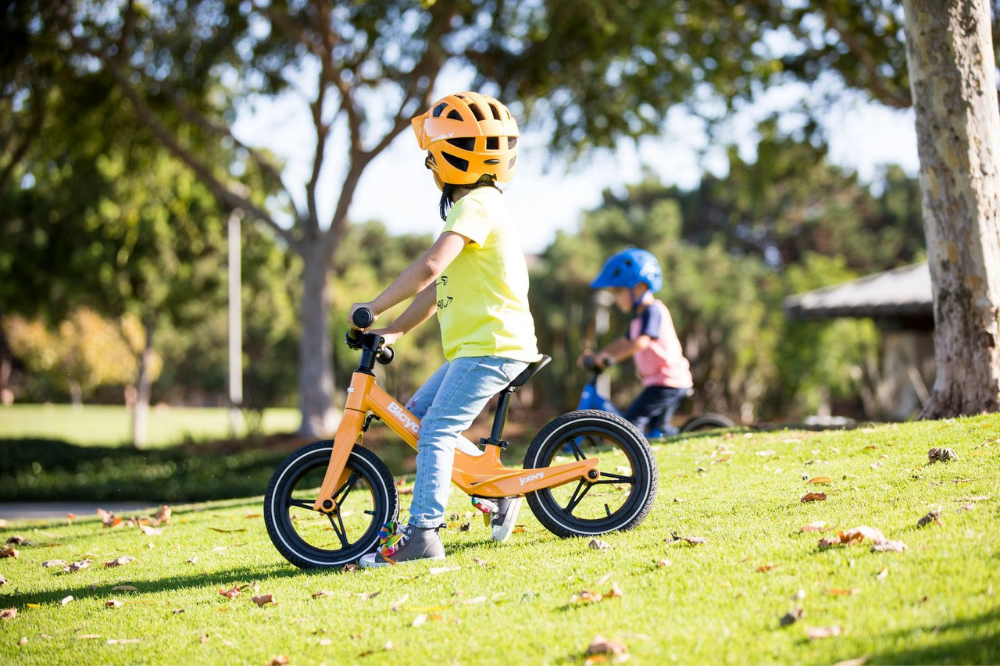
Even if you’re starting with training wheels, focus on balance to start — it’s an easier skill to build on than add-in. Teach your child to coast with their feet off the ground, and be patient, this is definitely the hardest part.
Step 5: Integrate Pedaling
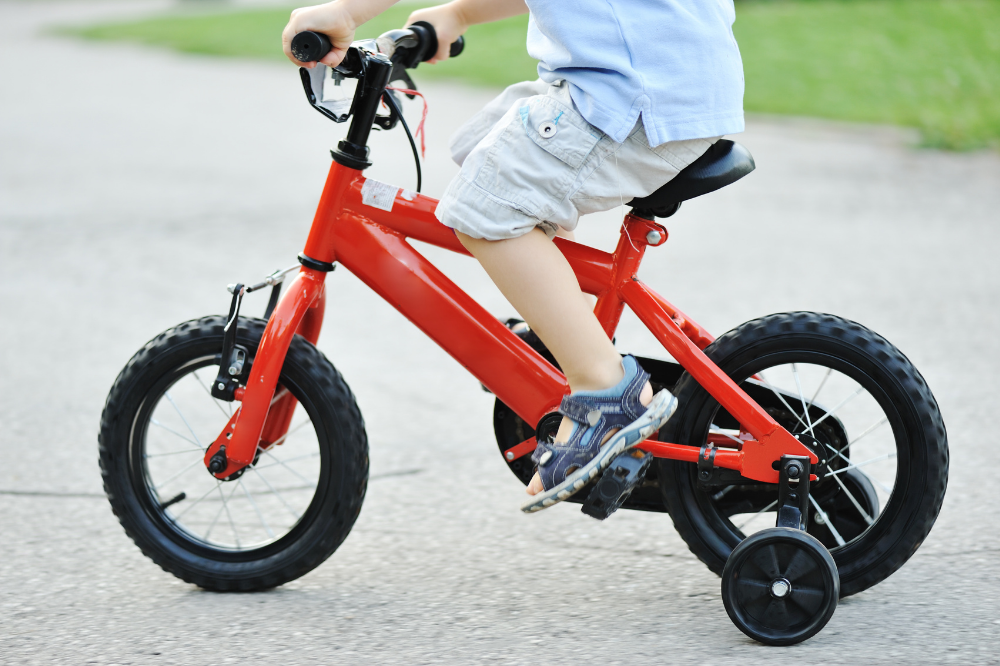
Once your child can coast, turn, and use the brakes at the same time, it’s time to start adding pedaling to the mix. If your child is on a bike without training wheels, be prepared to help them balance as they start pedaling.
Before you get started, make sure that at a stop, your child can put his or her feet on the ground completely. Focus on making them aware of where the pedals are, feeling for them with their eyes closed while at a stop.
Once they have it down, it’s time to bring it all together and get moving.
- Start with your child sitting on the bike, with one leg on the ground, and tell them to lift the other to rest on the pedal.
- Providing them with some support around their shoulders, tell them to press the pedal with their other foot.
- Don’t support your child’s weight as they take off — just help them balance until they get the momentum to cruise.
Step 6: Practice Together

Learning to ride a bike is a memory you get to make every time you ride together. Go on quiet neighborhood rides together to help your child get comfortable with it. If you have a younger child who’s at least six months old, use a bike trailer like the CocoonX2 to bring the whole family along for the ride.
Shop CocoonX2

